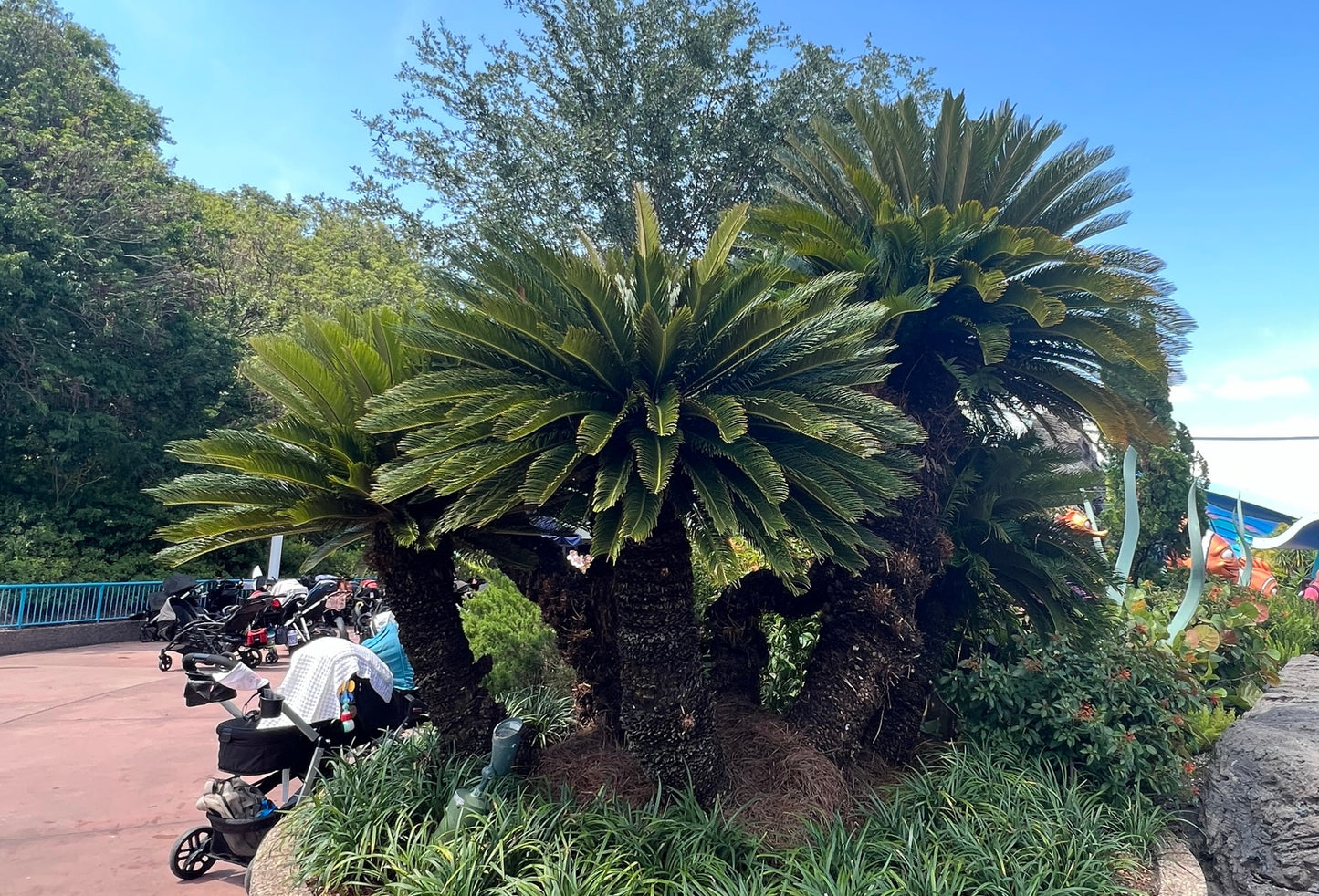Floridaseeds
Sago Palm Cycas revoluta 5 Seeds
Sago Palm Cycas revoluta 5 Seeds
Couldn't load pickup availability
The Sago Palm, Cycas revoluta, is a cold hardy cycad that attains good size and has become a very popular landscape item It is the most common cycad used in landscape today. Notwithstanding the common name of sago palm or King Sago palm, this cycad is botanically closer to conifers than to palms. This species in native to Kyushu (third largest Japanese island), the Ryukyu Islands and southern China. It is a very slow-growing, symmetrical plant that produces a crown of shiny, arching, palm-like, evergreen palmate leaves atop a shaggy upright trunk. Trunks take a long time to form (1" diameter trunks may take years to eventually reach 12" diameter). Young plants typically grow to 2-3' tall over several years, but may take 50 or more years to eventually reach 10' tall. Arching pinnate leaves (to 3-7' long depending on age) form a loose, feather-like rosette with leaflets to 7" long. Each leaf has a large mid-rib with very narrow, rigid, spiny-tipped, deep green leaflets. Leaflets have revolute edges (margins rolled downward), hence the specific epithet. Young sago palm plants produce leaves intermittently in several different growth spurts per year, however mature plants only produce leaves once per year. Plants are dioecious (separate male and female plants). Female plants will not produce seed without a nearby male, however these plants rarely flower when grown indoors in containers. Males produce upright yellowish ellipsoid pollen cones (to 12-18" tall). Orbicular female cones produce vermilion seeds.
Winter hardy to USDA Zones 9-10 (possibly including protected areas in Zone 8) where it is easily grown outdoors in sandy, humusy, well-drained soils in full sun to shade. Perhaps best in part shade. Appreciates a good mulch. Superior soil drainage is needed. Established plants tolerate some drought. Plants also tolerate temperatures that briefly dip into the high teens but some frost damage to the foliage will occur. Plants may not survive temperatures below 15 degrees F. Plants sucker at the base. Propagation is by suckers/offsets or seed. Very slow growth, but plants live a long time. Indoors plants should be planted in containers with a soil-based potting mix amended with sand and peat. Site plants in filtered sun for 4-6 hours per day (as through a window curtain on an east, west or southern window). Needs regular and consistent moisture with soil surface nearly drying between water applications.
Growing Instructions for the sago palm
The seeds have a hard seed coat that has to be treated, or scarified, in order for water to enter the seeds so that they can sprout. 1. Scarify the seeds by nicking or sanding the seed coat. The seeds can be sanded with sandpaper, a nail file or an emery board. 2. The seeds like moist, well-drained soil. Prepare a mixture of half potting soil and half sand, perlite or vermiculite. Put the soil in a pot. Water the mixture so that it is moist but not wet. 3. Plant the seeds horizontally on the surface of the soil. 4. Cover the seeds with a thin layer of soil. 5. Water the seeds. 6. Place the pots in an area with warm temperatures in full sun or part shade. 7. When the seedlings are a few inches tall, they can be transplanted.












